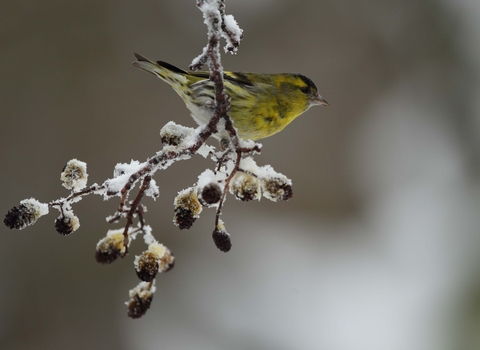©Philip Precey

Male Siskin on Alder ©Luke Massey/2020VISION
Alder
Common alder can be found along riversides, and in fens and wet woodlands. Its exposed roots provide shelter for fish, and its rounded leaves are food for aquatic insects.
©Philip Precey

Male Siskin on Alder ©Luke Massey/2020VISION